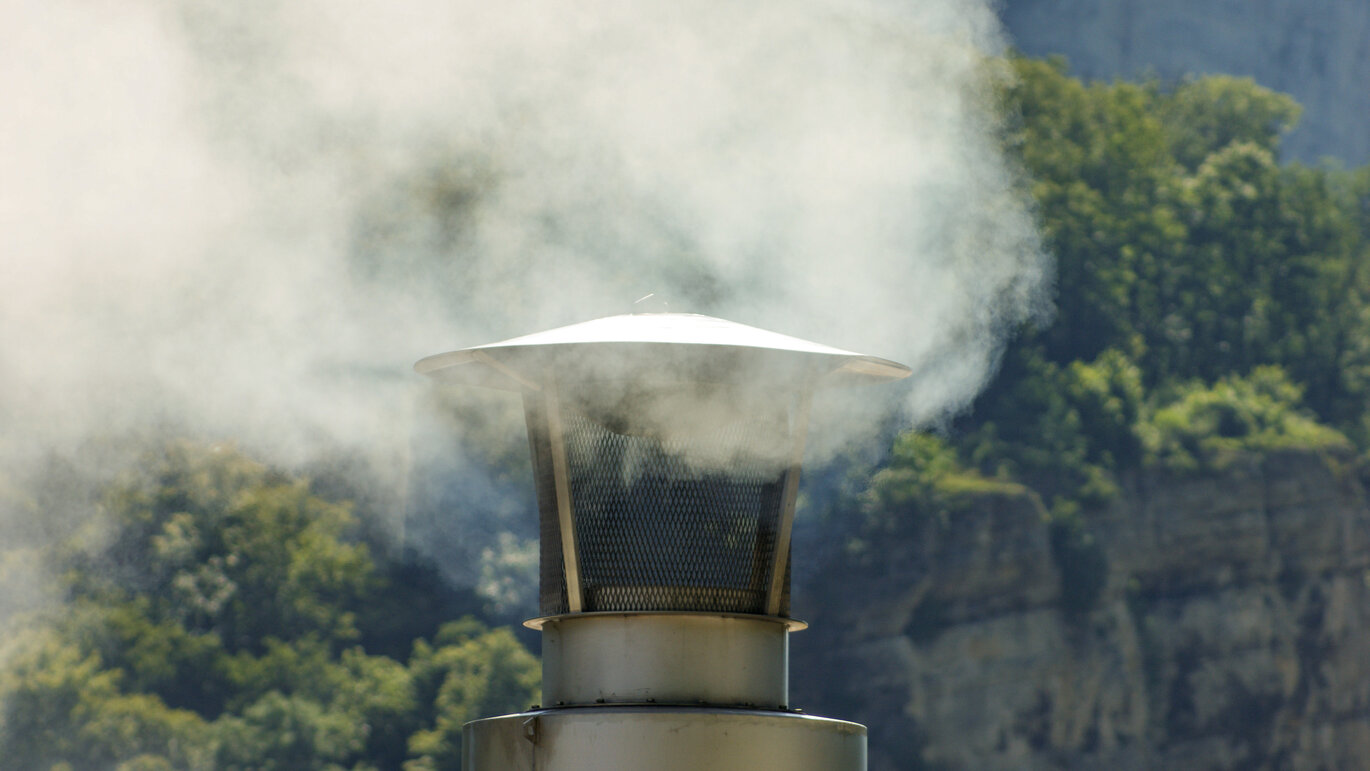«Why do you only use white and not black training smoke?» This is a question asked by many course participants who prepare for deployment in our training tunnels. The simple answer is: White training smoke, when used correctly, is not harmful to health or the environment and is perfectly sufficient for our training goals. In this article, we explain the benefits of white training smoke and provide guidance on using smoke fluids for operational drills.
Training smoke is safe when used correctly
Training smoke, also called synthetic or theatrical smoke, is produced with machines that vaporise a glycol-water mixture or liquid paraffin. We call this smoke training smoke because it simulates fire smoke during our drills.
The International Fire Academy only uses glycol-water fluids because they are not hazardous to health or the environment when used correctly. Another significant advantage of the glycol fluids is that they leave practically no residue in the training tunnels, and therefore there is no risk of slipping.

For each fluid, there are safety data sheets from the manufacturers that explain the permissible uses, safe handling and any hazards. Caution is always advised when handling the undiluted fluid. It must not get into the eyes, must not be swallowed and may cause skin irritation. The training smoke is considered harmless as long as it is not overheated in the smoke machines because carcinogenic substances can be formed at too high temperatures.
Allergic reactions and anxiety are possible
However, the fluids are not entirely risk-free. The fire service accident insurance fund of North Rhine-Westphalia reports at least one case in which an actor playing an injured person suffered severe allergic reactions from the training smoke. Some manufacturers explicitly point out in their safety data sheets that obstructing the vision, especially in confined spaces, can trigger anxiety reactions. Practical consequence: actors should not be left unattended during the drill unless they are experienced and have successfully endured the training smoke without any problems.

The Austrian General Accident Insurance Fund has created comprehensive documentation on the safe handling of smoke fluids with valuable practical tips and background information, which can be downloaded free of charge here.
The following also applies to training smoke: if black, then it is toxic
For creating dark or even black smoke, colour particles would have to be added to the fluids, which are more or less harmful to health. The course participants could effectively protect themselves against this by using breathing apparatus. However, in many training phases where residual amounts of exercise smoke can still «linger in the air», breathing apparatuses are not worn - for example, when tidying up lines or during training debriefings.

In order to avoid any potential endangerment of course participants and employees, the International Fire Academy uses only pure glycol-water fluids in the training tunnel facilities and the training car park, without any admixture of dyes or fragrances. In addition, there is also a technical reason. The dye particles could clog the gas and temperature sensors of our fire simulation systems and make them unusable.
Training the tactile sense in white training smoke
White training smoke is not realistic because real fire smoke is dark and can be considerably denser. However, the simulated smoke situation is sufficiently realistic to provoke important learning effects, especially in complete darkness. Trainees have to sharpen their tactile senses, for example, to recognise obstacles or to detect people on the ground, if visibility is reduced to such an extent that, at best, the immediate surroundings can still be visually maid out in the glow of the torches. They then also learn very quickly how to use the search sticks correctly.

How to find the right amount of practice smoke? Try it out!
For drills at the home district, we recommend using glycol-water fluids, as offered by most fire service equipment suppliers, due to their advantages described above. In our experience, good effects can be achieved even with relatively small machines. How much fluid is needed for sufficiently dense smoke depends on many factors, including weather conditions. It has proven useful to run the machines only briefly at first and then observe how the smoke propagates. Often the smoke is denser than expected after some time. So: try it out!

Fans help to optimise smoke propagation
Fans can be used to spread the smoke more quickly and thus optimise the smoke. The International Fire Academy uses fans permanently installed in the flight cases for this purpose. Good results can also be achieved with the usual fire service fans.
If the training smoke leaves the training object too quickly, this can be prevented with large tarps, for example. Here, too, the key is to try it out!



